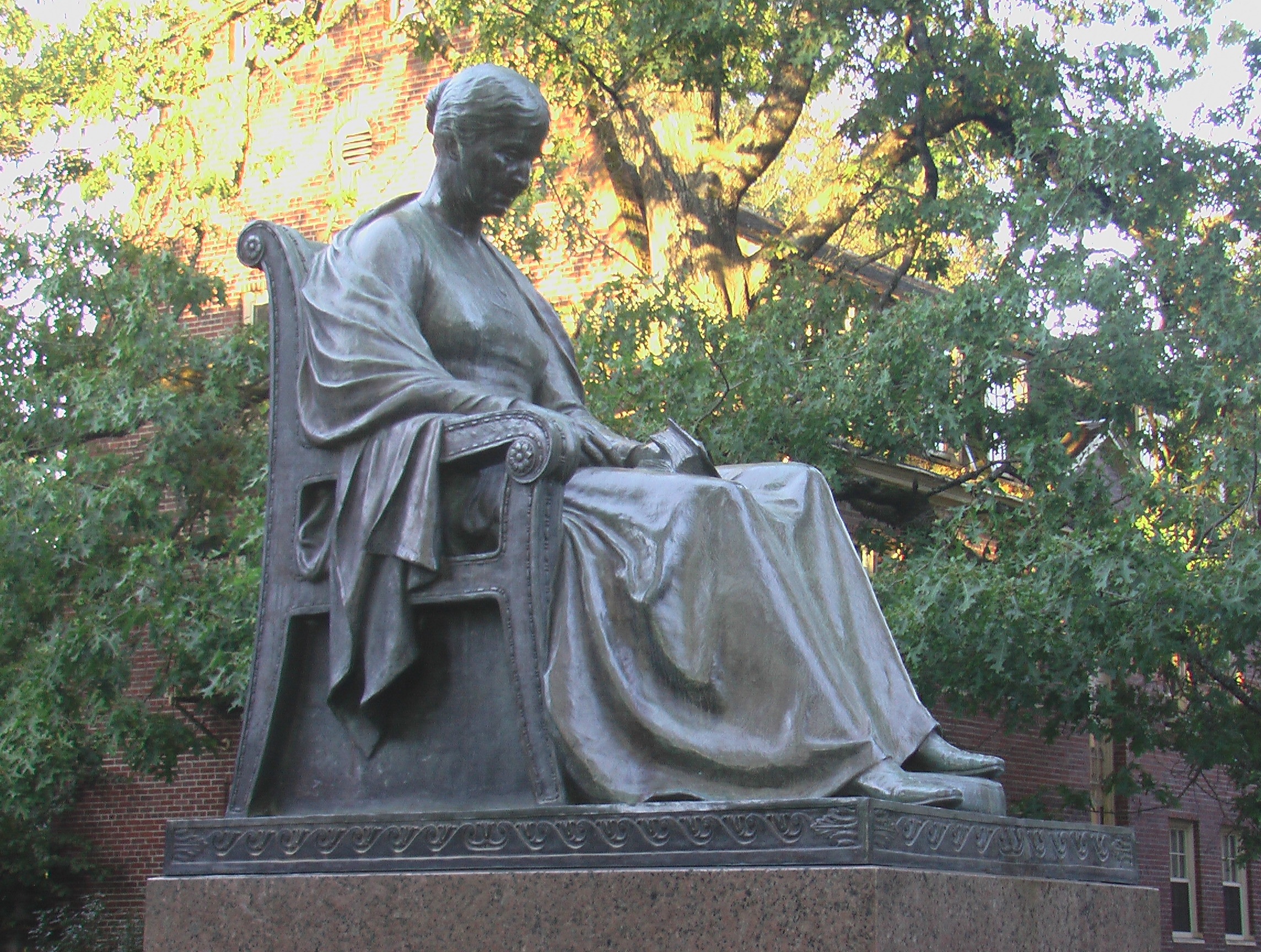I wrote this piece for the Register Guard but since I have not heard back from them, I’ll publish it here. (The previous editors didn’t publish everything I wrote either, but at least they always responded to me. <Sigh>)
I greatly appreciated the Aug 23rd op ed by Tillena Trebon, “Racism is not art” on the embedded racism within the pioneer statues at the University of Oregon. I confess my own ignorance as a white person to the extent to which these tributes to Oregon pioneers reflected the white privilege of which I have benefited my entire life.
Therein of course, lies much of the problem, that such privilege is so deep within our culture, we, of the dominant class, can be completely unaware of its presence. I give thanks, therefore, to the Black Lives Matter movement and others for raising that awareness and contributing to the removal of those problematic symbols of our racist heritage.
There is, however, another side to the Pioneer statues which I fear will be lost, as if race is the only lens through which they should be viewed. Art, as well as literature, is not only a depiction of the period it represents, it often conveys as much or more about the period in which it was created. This is particularly true in the case of confederate statuary, erected in many southern states decades after the Civil War as an expression of white supremacy in the late 1800s and early 1900s.
The Pioneer Mother, one of the statues toppled this past June, is often portrayed as a companion to the Pioneer, the other toppled statue. She should, however, be more properly portrayed as the older version of herself which resides at the beginning of her journey in Kansas City. There a younger pioneer mother sits atop a wearied horse, holding an infant to her chest, with her pioneer husband walking alongside.
All three statues are the creation of Alexander Proctor. This younger version of the Pioneer Mother was created in the early 1920s and installed at its current location in 1927. Proctor wrote of her creation, “It seemed to me that most people, in thinking of pioneers, thought solely of the men. I considered the heroism of the women equal to, and perhaps greater than the men’s. As Mark Twain said, ‘The women had to endure everything the pioneers did, and then they also had to endure the pioneers!’”
For the dedication of his work, Proctor choose the Reverend Burris Jenkins as the speaker. A month later Jenkins gave a sermon entitled “The Pioneer Mother”, likely a slight revision of his dedication speech, in which he praised the role of pioneering women not just of old, but in the modern day, providing voice and leadership in “politics, economics and even international affairs.”
The result, predicted Jenkins, would be more decent municipal government, the abolition of child labor, decreased infant mortality, justice between the classes and even the abolition of war. “If this is a chaotic time in religious and moral matters, and it is,” said Jenkins, “our pioneer women will bear their share of enduring the long journey and of finding their way to the new home and the new peace.”
The question, therefore, must be asked: is the Pioneer Mother an expression of the white supremacy that resulted in the taking of land from native people or is she an expression of woman’s suffrage that brought the U.S. into a new age which would eventually result in the nomination of a Black woman to the office of Vice President as we celebrate the centennial of that suffrage? The answer, of course, is some of both. Is there a way we can celebrate the latter in our public images without praising the former? Yes, we can and we should.
One postscript to this story. When the Pioneer was dedicated in 1919, former Eugene mayor T.G. Hendricks, a pioneer himself and for whom Hendricks park is named, was chosen to remove the canvas covering the statue. At his side was his granddaughter, Martha Goodrich. I had the privilege to serve as Martha’s pastor when I came to Eugene in 1991 and to conduct her memorial service a few years later.
Martha was as fine a woman as you would ever know. Her portrait hangs in the administration building of Bushnell University, an institution along with the University of Oregon, the Eugene Public Library, First Christian Church and many other things in our community, that her grandparents helped to establish.
I wish I had known to ask her when I had the chance if she remembered that day in 1919 or what that statue meant to her. I can say without any doubt that she would have been horrified to be associated in any way with the white supremacy that we see in that statue today. I cannot say whether she would have advocated its removal from the Oregon campus, but she certainly would advocate the removal of the racist notions it represents from our society.

How about leaving the old statues in place and adding new ones as times and attitudes change?